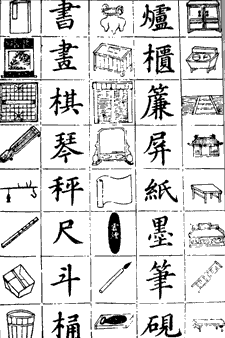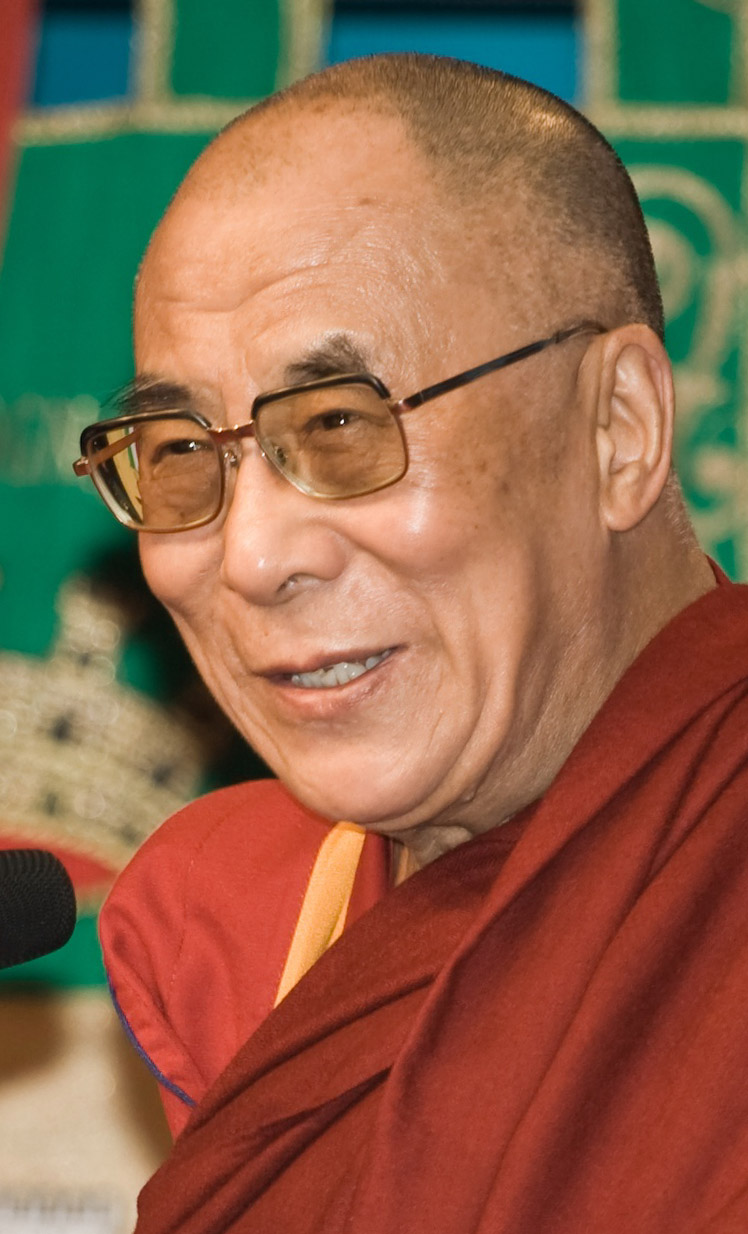|
Red Poppies
''Red Poppies'' () is a 1998 Chinese-language novel by the Tibetan Chinese writer Alai, whose theme is based on the Tibetan custom and traditions. The novel consists of 12 chapters with a total of 481,000 Chinese characters. It won the Mao Dun Literature Prize in 2000. Summary Set in Ngawa, Sichuan, the novel chronicles the stories of a Tibetan Tusi and his family from the 1920s to 1949, which gives a general introduction to the economic development in Ngawa, the territorial disputes among Tibetan chieftains, and the fights for throne succession. Main characters Family of Tusi Maiqi * The first-person narrator: considered as an 'idiot', the second son of Tusi Maiqi, mother is a Han Chinese * Tusi Maiqi: father of the first-person narrator * Mother: the second wife of Tusi Maiqi, a Han Chinese woman as a gift given to Maiqi by a merchant trading furs and herbs * Brother: the eldest son of Tusi Maiqi, son of Maiqi's first wife, considered as the successor of Tusi Maiqi * Sangj ... [...More Info...] [...Related Items...] OR: [Wikipedia] [Google] [Baidu] |
Alai (author)
Alai (; ; born 1959 in Sichuan Province) is a Chinese-language poet and novelist of Rgyalrong Tibetan descent. He is also a former editor of '' Science Fiction World''. Works Alai's notable novel '' Red Poppies'', published in 1998, follows a family of Tibetan chieftains, the Maichi, during the decade or so before the “liberation” of Tibet by the People's Liberation Army in 1951. Their feudal life in the Tibetan borderlands, narrated by the youngest "idiot" son, is described as cruel, romantic, and full of intrigue (with the Annexation of Tibet by the People's Republic of China presented as a great advance for the Tibetan peasantry). ''Red Poppies'' won the 5th Mao Dun Literary Prize in 2000 and was selected as a finalist for the Kiriyama Prize The Kiriyama Prize was an international literary award awarded to books about the Pacific Rim and South Asia. Its goal was to encourage greater understanding among the peoples and nations of the region. Established in 1996, the prize ... [...More Info...] [...Related Items...] OR: [Wikipedia] [Google] [Baidu] |
Tibetan Culture
Tibet developed a distinct culture due to its geographic and climatic conditions. While influenced by neighboring cultures from China, India, and Nepal, the Himalayan region's remoteness and inaccessibility have preserved distinct local influences, and stimulated the development of its distinct culture. Tibetan Buddhism has exerted a particularly strong influence on Tibetan culture since its introduction in the seventh century. Buddhist missionaries who came mainly from India, Nepal and China introduced arts and customs from India and China. Art, literature, and music all contain elements of the prevailing Buddhist beliefs, and Buddhism itself has adopted a unique form in Tibet, influenced by the Bön tradition and other local beliefs. Several works on astronomy, astrology and medicine were translated from Sanskrit and Classical Chinese. The general appliances of civilization have come from China, among many things and skill imported were the making of butter, che ... [...More Info...] [...Related Items...] OR: [Wikipedia] [Google] [Baidu] |
Chinese Character
Chinese characters () are logograms developed for the writing of Chinese. In addition, they have been adapted to write other East Asian languages, and remain a key component of the Japanese writing system where they are known as '' kanji''. Chinese characters in South Korea, which are known as '' hanja'', retain significant use in Korean academia to study its documents, history, literature and records. Vietnam once used the ''chữ Hán'' and developed chữ Nôm to write Vietnamese before turning to a romanized alphabet. Chinese characters are the oldest continuously used system of writing in the world. By virtue of their widespread current use throughout East Asia and Southeast Asia, as well as their profound historic use throughout the Sinosphere, Chinese characters are among the most widely adopted writing systems in the world by number of users. The total number of Chinese characters ever to appear in a dictionary is in the tens of thousands, though most are g ... [...More Info...] [...Related Items...] OR: [Wikipedia] [Google] [Baidu] |
Mao Dun Literature Prize
Mao Dun Literature Prize () is a prize for novels, established in the will of prominent Chinese writer Mao Dun (for which he personally donated 250,000 RMB) and sponsored by the China Writers Association. Awarded every four years, it is one of the most prestigious literature prizes in China. It was first awarded in 1982. Selection rules According to selection rule, any work, authored by Chinese nationals, published in mainland China, and with over 130,000 characters, is eligible. The selection committee in the Chinese Writers Association holds the voting poll twice, and the winner must receive over 2/3 of the votes cast. The process is highly selective and each time, the number of winners is between three and five. The prize is awarded every four years, though it was originally awarded every three years. Criticism The award was recently criticized for the 2011 awards, [...More Info...] [...Related Items...] OR: [Wikipedia] [Google] [Baidu] |
Ngawa Tibetan And Qiang Autonomous Prefecture
Ngawa Tibetan and Qiang Autonomous Prefecture, also known as Aba (; Qiang: ; ), is an autonomous prefecture of northwestern Sichuan, bordering Gansu to the north and northeast and Qinghai to the northwest. Its seat is in Barkam, and it has an area of . The population was 919,987 in late 2013. The county of Wenchuan in Ngawa is the site of the epicenter of the 2008 Sichuan earthquake, in which over 20,000 of its residents died and 40,000 were injured. History and names During the reign of Tibet's king Trisong Deutsen in the 8th century, the Gyalrong area was visited by the great translator Vairotsana. In 1410 Je Tsongkhapa's student Tshakho Ngawang Tapa established the first Tibetan Buddhist Gelug school monastery in the area, called "Gyalrong". In contemporary history, most of Ngawa was under the 16th Administrative Prefecture of Szechwan (), which was established by the Republic of China (ROC). The People's Republic of China defeated ROC troops in this area during Chines ... [...More Info...] [...Related Items...] OR: [Wikipedia] [Google] [Baidu] |
Sichuan
Sichuan (; zh, c=, labels=no, ; zh, p=Sìchuān; alternatively romanized as Szechuan or Szechwan; formerly also referred to as "West China" or "Western China" by Protestant missions) is a province in Southwest China occupying most of the Sichuan Basin and the easternmost part of the Tibetan Plateau between the Jinsha River on the west, the Daba Mountains in the north and the Yungui Plateau to the south. Sichuan's capital city is Chengdu. The population of Sichuan stands at 83 million. Sichuan neighbors Qinghai to the northwest, Gansu to the north, Shaanxi to the northeast, Chongqing to the east, Guizhou to the southeast, Yunnan to the south, and the Tibet Autonomous Region to the west. In antiquity, Sichuan was the home of the ancient states of Ba and Shu. Their conquest by Qin strengthened it and paved the way for Qin Shi Huang's unification of China under the Qin dynasty. During the Three Kingdoms era, Liu Bei's state of Shu was based in Sichuan. T ... [...More Info...] [...Related Items...] OR: [Wikipedia] [Google] [Baidu] |
Tusi
''Tusi'', often translated as "headmen" or "chieftains", were hereditary tribal leaders recognized as imperial officials by the Yuan, Ming, and Qing dynasties of China, and the Later Lê and Nguyễn dynasties of Vietnam. They ruled certain ethnic minorities in southwest China and the Indochinese peninsula nominally on behalf of the central government. This arrangement is known as the ''Tusi System'' or the ''Native Chieftain System'' (). It should not to be confused with the Chinese tributary system or the Jimi system. ''Tusi'' were located primarily in Yunnan, Guizhou, Tibet, Sichuan, Chongqing, the Xiangxi Prefecture of Hunan, and the Enshi Prefecture of Hubei. ''Tusi'' also existed in the historical dependencies of China in what is today northern Myanmar, Laos, and northern Thailand. Vietnam also implemented a ''Tusi'' system under the Later Lê and Nguyễn dynasties. In 2015, UNESCO designated three ''Tusi'' castles ( Laosicheng, Tangya, and Hailongtun) as part ... [...More Info...] [...Related Items...] OR: [Wikipedia] [Google] [Baidu] |
Lama
Lama (; "chief") is a title for a teacher of the Dharma in Tibetan Buddhism. The name is similar to the Sanskrit term ''guru'', meaning "heavy one", endowed with qualities the student will eventually embody. The Tibetan word "lama" means "highest principle", and less literally "highest mother" or "highest parent" to show close relationship between teacher and student."lama" from Historically, the term was used for venerated spiritual masters or heads of . Today the title can be used as an [...More Info...] [...Related Items...] OR: [Wikipedia] [Google] [Baidu] |
Gelug
240px, The 14th Dalai Lama (center), the most influential figure of the contemporary Gelug tradition, at the 2003 Bodh_Gaya.html" ;"title="Kalachakra ceremony, Bodh Gaya">Bodhgaya (India). The Gelug (, also Geluk; "virtuous")Kay, David N. (2007). ''Tibetan and Zen Buddhism in Britain: Transplantation, Development and Adaptation,'' p. 39. Routledge. is the newest of the four major schools of Tibetan Buddhism. It was founded by Je Tsongkhapa (1357–1419), a Tibetan people, Tibetan philosopher, Vajrayana, tantric yogi and lama and further expanded and developed by his disciples (such as Khedrup Je, Gyaltsap Je and Gendün Drubpa). The Gelug school is alternatively known as New Kadam (''bKa’-gdams gsar-pa''), since it sees itself as a continuation of the Kadam tradition of Atisha (c. 11th century). Furthermore, it is also called the Ganden school, after the first monastery established by Tsongkhapa. The Ganden Tripa ("Ganden Throne Holder") is the official head of the s ... [...More Info...] [...Related Items...] OR: [Wikipedia] [Google] [Baidu] |
1998 Chinese Novels
1998 was designated as the ''International Year of the Ocean''. Events January * January 6 – The ''Lunar Prospector'' spacecraft is launched into orbit around the Moon, and later finds evidence for frozen water, in soil in permanently shadowed craters near the Moon's poles. * January 11 – Over 100 people are killed in the Sidi-Hamed massacre in Algeria. * January 12 – Nineteen European nations agree to forbid human cloning. * January 17 – The '' Drudge Report'' breaks the story about U.S. President Bill Clinton's alleged affair with Monica Lewinsky, which will lead to the House of Representatives' impeachment of him. February * February 3 – Cavalese cable car disaster: A United States military pilot causes the deaths of 20 people near Trento, Italy, when his low-flying EA-6B Prowler severs the cable of a cable-car. * February 4 – The 5.9 Afghanistan earthquake shakes the Takhar Province with a maximum Mercalli intensity of VII (''Very strong''). ... [...More Info...] [...Related Items...] OR: [Wikipedia] [Google] [Baidu] |
Novels Set In Tibet
A novel is a relatively long work of narrative fiction, typically written in prose and published as a book. The present English word for a long work of prose fiction derives from the for "new", "news", or "short story of something new", itself from the la, novella, a singular noun use of the neuter plural of ''novellus'', diminutive of ''novus'', meaning "new". Some novelists, including Nathaniel Hawthorne, Herman Melville, Ann Radcliffe, John Cowper Powys, preferred the term "romance" to describe their novels. According to Margaret Doody, the novel has "a continuous and comprehensive history of about two thousand years", with its origins in the Ancient Greek and Roman novel, in Chivalric romance, and in the tradition of the Italian renaissance novella.Margaret Anne Doody''The True Story of the Novel'' New Brunswick, NJ: Rutgers University Press, 1996, rept. 1997, p. 1. Retrieved 25 April 2014. The ancient romance form was revived by Romanticism, especially th ... [...More Info...] [...Related Items...] OR: [Wikipedia] [Google] [Baidu] |





